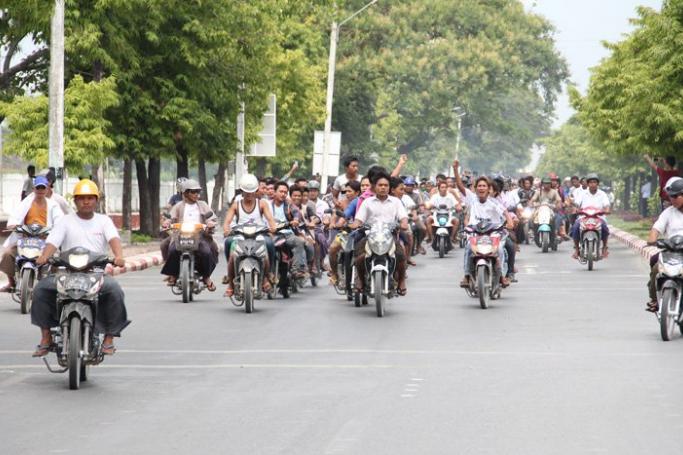The Justice Trust has just released a report, “Hidden Hands Behind Communal Violence in Myanmar: Case Study of the Mandalay Riots,” documenting the use of organized gangs of armed men to commit anti-Muslim riots under the guise of spontaneous mob violence.
The NGO held a press conference in Bangkok on March 23 to release the report.
“This report shows what most Burmese have known for a long time – that religious hatred between Buddhists and Muslims is being stoked by hidden hands and manipulated as a pretext for maintaining their grip on power,” said U Thein Than Oo, a Mandalay lawyer who serves on Justice Trust’s steering committee. “We have seen this script many times before – the deployment of plainclothes forces [Swah Ah Shin] rather than uniformed soldiers to commit national-scale political violence, and the scapegoating of minorities to divert public attention away from the country’s real needs.”
Drawing on six months of research by a team of local and international lawyers, the report analyzes the riots that shook Mandalay in July 2014 – the latest in a series of communal attacks across the country – and places these riots in the context of previous waves of communal conflict carried out under past military regimes.
The Mandalay riots closely followed every element of this pattern, starting with a false charge of rape spread on Facebook. But unlike in previous riots, where large mobs developed and the violence spun out of control, local people in Mandalay refused to participate despite the best efforts of outside agitators. In fact, local monks, activists and journalists arrived and tried to contain the situation. Without the protective cover of a sympathetic crowd, the outside agitators were exposed, the stage-managed nature of their violence was made visible to the public, and the overall damage was limited.
The report states that: “The case of Mandalay therefore provides the clearest evidence yet of a deliberate political strategy to foment anti-Muslim violence, as well as the best example of countering this strategy through a local early warning system to mobilize an immediate on-the-ground response.”
According to multiple corroborated eyewitnesses, the Mandalay riots were carried out over two straight nights by a small group of men on motorcycles who rampaged through Muslim neighborhoods. This took place in plain view of fully armed riot police, who followed the rioters and watched the mayhem unfold without taking action.
You are viewing the old site.
Please update your bookmark to https://eng.mizzima.com.
Mizzima Weekly Magazine Issue...
14 December 2023
Spring Revolution Daily News f...
13 December 2023
New UK Burma sanctions welcome...
13 December 2023
Spring Revolution Daily News f...
12 December 2023
Spring Revolution Daily News f...
11 December 2023
Spring Revolution Daily News f...
08 December 2023
Spring Revolution Daily News f...
07 December 2023
Diaspora journalists increasin...
07 December 2023
EUR 8 million to support inclusive and sustainable trade growth in Myanmar












